How about a graphic novel?
4+ recs for lovers of sci-fi, detective fiction, B-horror, and, yes, Gothic
Something a little lighter today! At least, a lighter reading load. Not necessarily lighter subject matter.
Before I get to my recs, a small request: if you know someone who might like this newsletter, will you share it with them? I don’t have social media anymore, so I’m trying to figure out how best to spread the word (and if you have thoughts on this, I’d love to hear them). Thank you in advance!
Recommendations
The Montague Twins: The Witch’s Hand (2020) and The Montague Twins: The Devil’s Music (2022) by Nathan Page and Drew Shannon
Twin brother detectives and their sort-of-sister run around a small town solving paranormal crimes. I used to love Archie Comics when I was a kid, and these books are like if Archie Comics were darker and more Gothic. Or like if Nancy Drew was actually good (I said what I said). According to Amazon, they’re written for 12- to 17-year-olds, but they address some surprisingly serious themes. The illustrations are beautiful, the plot is engaging, the world is fun! Very…Fall Vibes. Highly recommend.
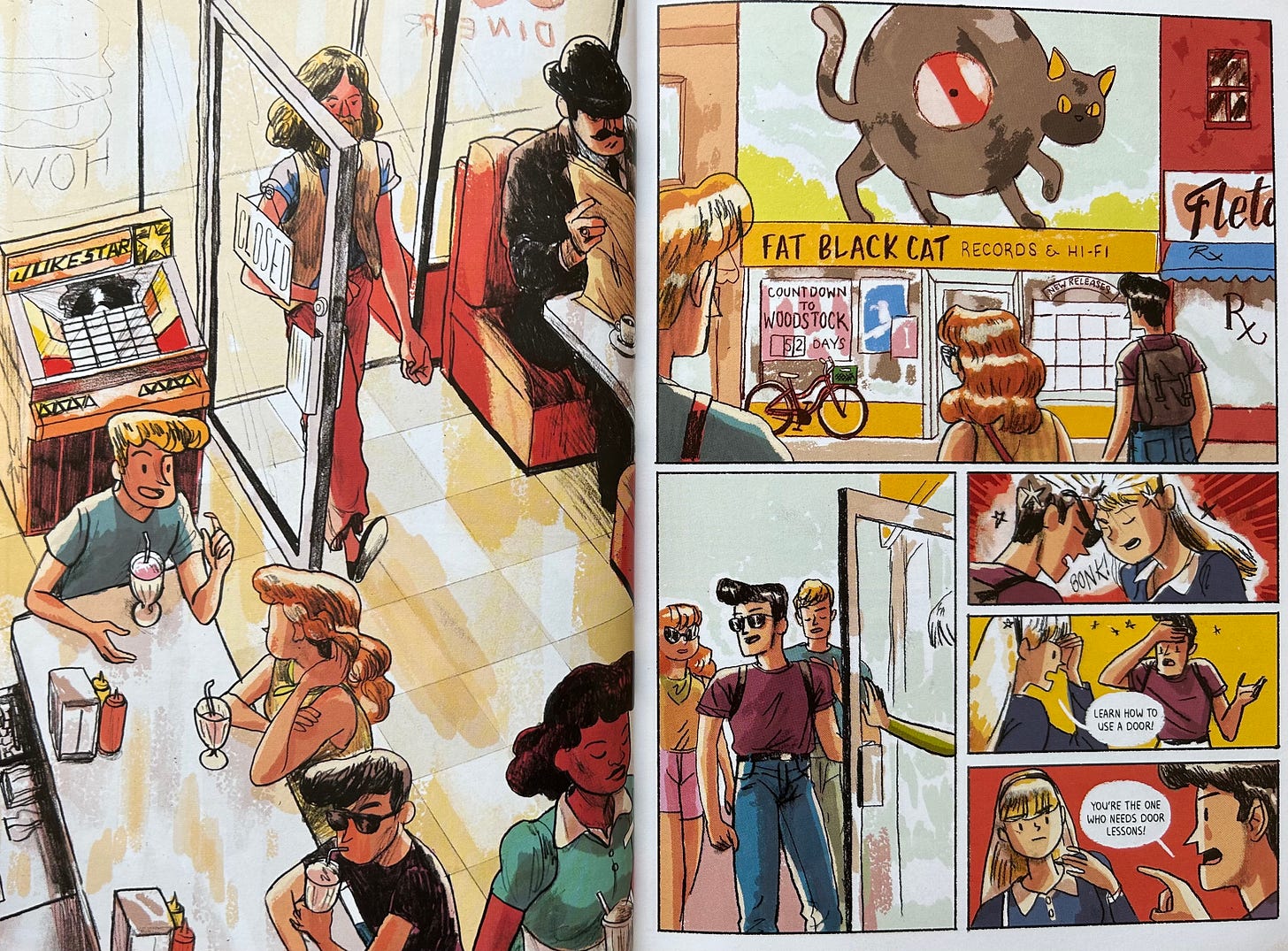
Destroyer (2018) by Victor LaValle
More sci-fi than Gothic, Destroyer is LaValle’s take on Mary Shelley’s Frankenstein. In Frankenstein, Victor’s ambition and (to some extent) grief drive him to make the Creature; but once the Creature comes to life, Victor renounces all responsibility, despite being, essentially, the Creature’s father. In Destroyer, LaValle works with these same ideas in a new way: when scientist Dr. Josephine Baker loses her son to police violence, she puts all her energy into bringing him back. But restoring her son doesn’t fully ameliorate the pain of the original loss. You might not think of Frankenstein as a book about loss, but it’s a big part of the story, and a huge theme in Mary Shelley’s own life. I love LaValle’s retelling of Frankenstein for the way it brings grief to the foreground, situates the story in a modern context, and plays with the “who is the monster?” question that is so central to Shelley’s text.
My Favorite Thing Is Monsters (2017) by Emil Ferris
Set in 1960s Chicago, My Favorite Thing Is Monsters tells the story of 10-year-old Karen Reyes and the mysterious death of a woman in her building. Through Karen’s eyes the book becomes a fantastical mash-up of detective fiction, B-horror, and coming-of-age story. Imagining herself as a werewolf (she’s drawn that way through the entire book), Karen uses horror and the Gothic in order to understand herself, her body, and her feelings for her best friend, as well as the very adult problems happening around her. My Favorite Thing Is Monsters is a great example of what I was talking about on Tuesday: how the Gothic can represent the experience of a child trying to make sense of the strange and frightening adult world. The illustrations are completely amazing: in addition to bringing Karen’s wild imagination to life, Ferris includes striking recreations of both dime-store novels and famous paintings, moving back and forth between moody black & white and vivid color. Part 2 is coming in April!
Through the Woods (2014) by Emily Carroll (+ 2 other books)
Through the Woods contains 5 original stories that borrow from fairytale and folklore but still feel fresh and new. Carroll’s illustrations — often using a Gothic black, white, and red palette — are gorgeous, and the stories are surprisingly dark. This version of the Gothic is very much Gothic horror: there’s a lot of blood here. But Carroll tells a bloody story in such a pretty way that even more squeamish readers will, I think, enjoy her work.
Carroll has written two other books that I enjoyed (and several more that I haven’t had a chance to read). A Guest in the House (2023) is her most recent — a version of the Bluebeard story set in an ordinary town in 1980s Canada. And When I Arrived at the Castle (2019) could have been on my reading list last week — it’s a lesbian vampire comic rendered in her signature black, white, and red. Unfortunately it’s currently out of print, so it’s difficult to get hold of. But it’s great!
What I love about Carroll’s work is that it is simultaneously familiar and strange, taking the basic premises of well-known stories and rewriting them in unexpected ways. If you like clear resolution, you might not like Carroll’s work; a lot of her stories left me saying, “wait, what?”. But if you’re okay with ambiguity, I strongly recommend all three of these books.
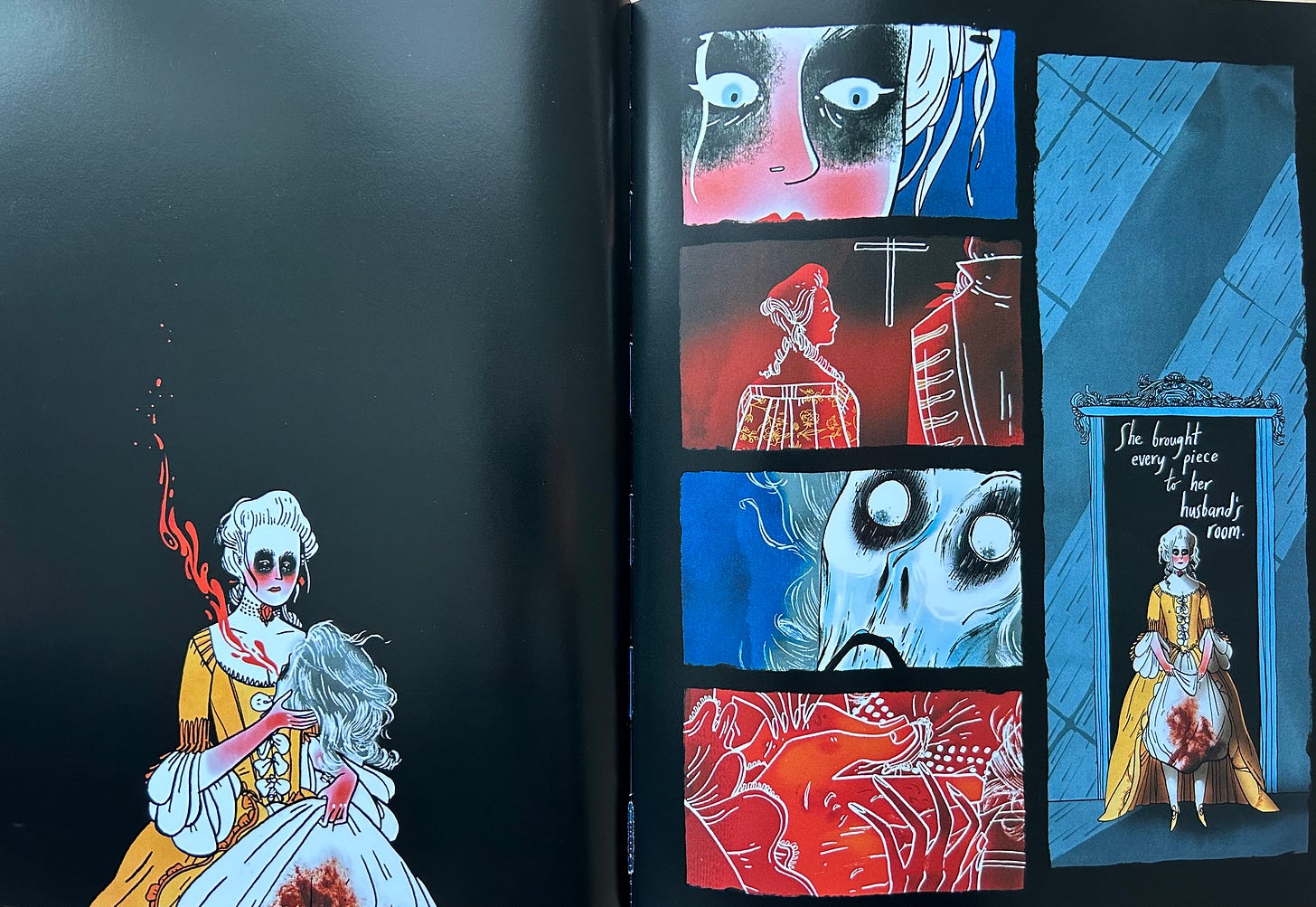
If you have any favorite spooky comics, I’d love to hear about them in the comments. Have a great weekend, everyone!
Perhaps you would like some dramatic music to accompany your spooky images?

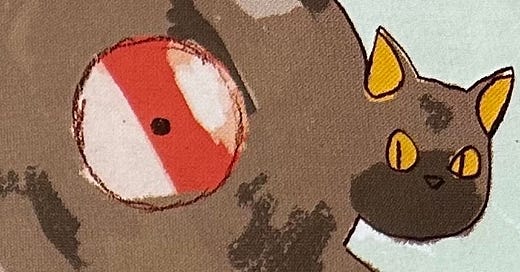


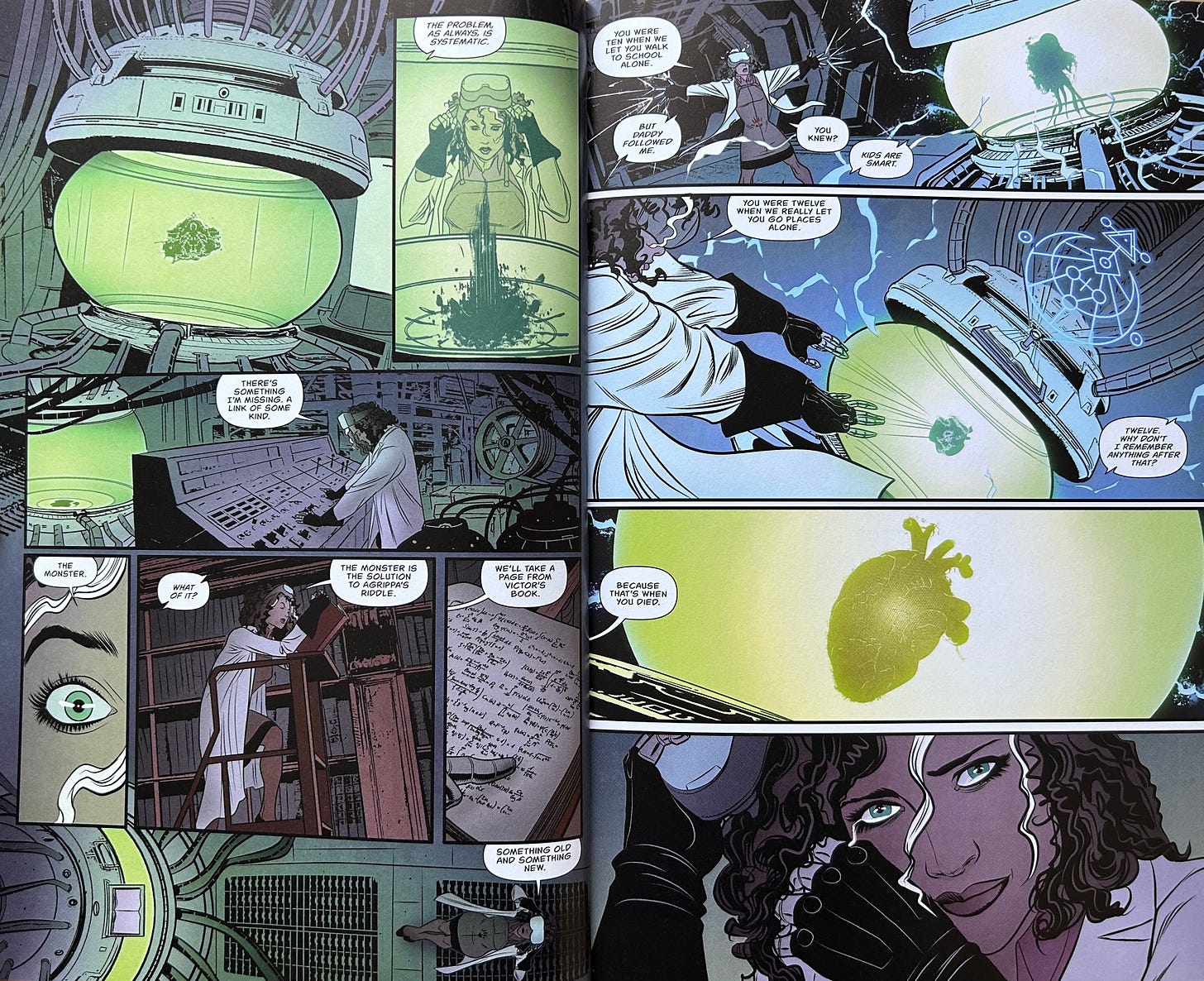
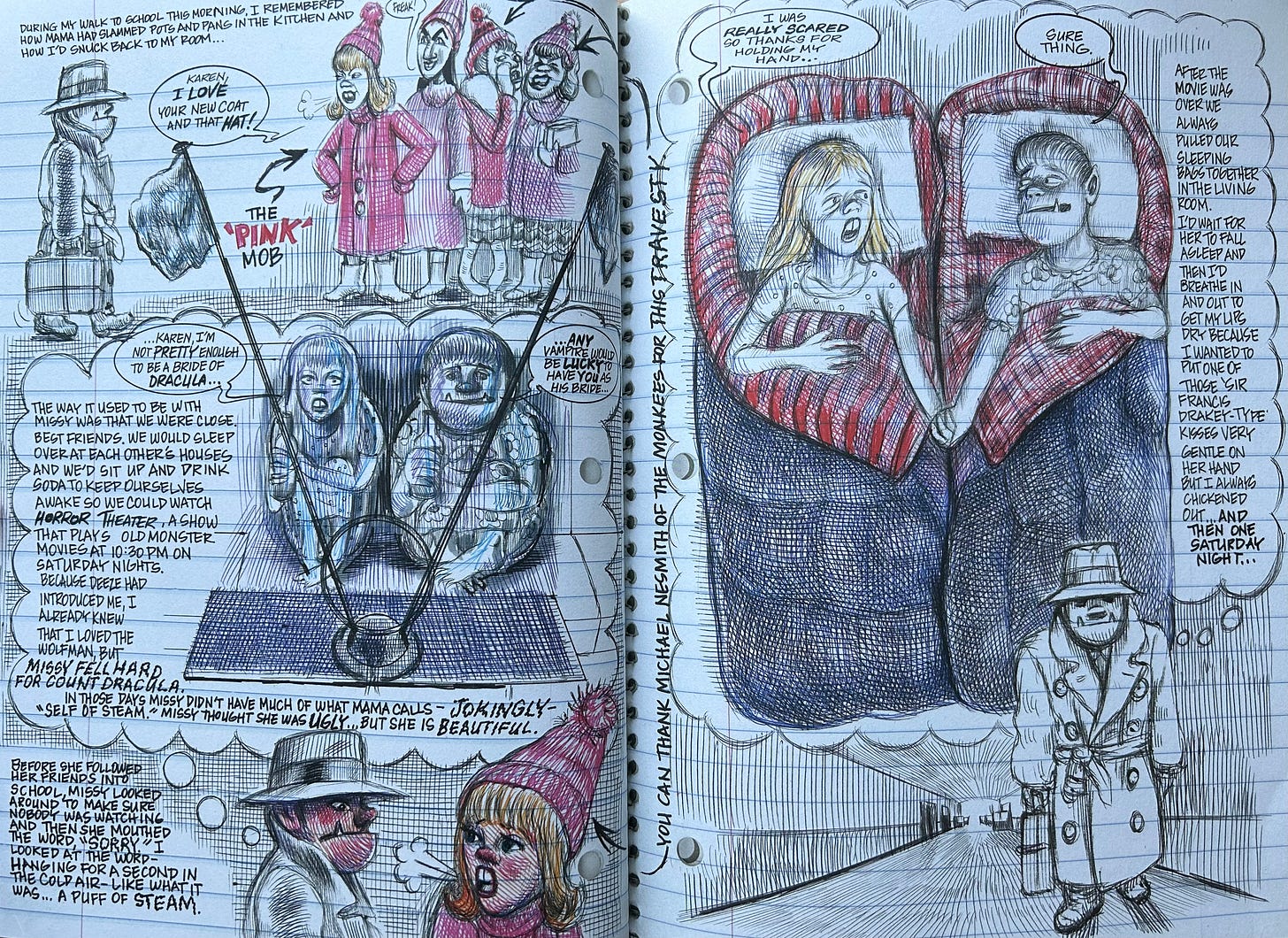
I read many, many comic books in my younger days, but I've never read a graphic novel. That is about to change, as I have requested "The Witch's Hand" from my local library. Also in my younger days, I devoured every Hardy Boys book I could find, (and even a couple of Nancy Drew stories.) Your mention of Archie Comics reminded me that the Hardy Boys' girlfriends (Iola Morton and Callie Shaw) seem like earlier versions of Archie's gal pals Betty Cooper and Veronica Lodge. I'm looking forward to learning whether or not the Montague Twins have any similar friends.
I was hoping you'd do a graphic novel post! I was thinking about Emily Caroll's lesbian vampire last week too. Now I really want to share Beautiful Darkness with you (just taught it last week, and it seriously freaked out my students). And, way more obscure, the Czech graphic novelist Vojtech Masek's The Sisters Dietl -- sort of a Kafka-esque X-Files.